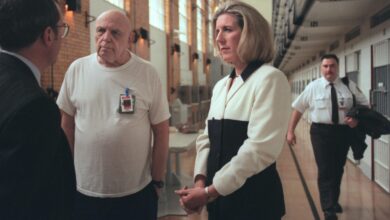Everything We Know About the University of Idaho Murders

It was a tragedy that shook the University of Idaho to its core – the murder of three innocent lives. The incident sent shockwaves through the community and beyond, leaving many wondering how such a horrific event could happen in their midst. As investigators worked tirelessly to piece together what had happened, rumors began swirling about possible suspects and motives. In this blog post, we will explore everything we know about the Idaho murders – from the victims to the investigation and aftermath. Join us as we uncover every detail surrounding this heartbreaking event.
What happened?
On April 29, 2019, the University of Idaho was rocked by the brutal murders of three people. The victims were identified as Tim Reeves, a professor in the Department of Psychology; Nicklaus Shaffer, a graduate student in the same department; and Katy Benoit, who worked as an office manager for another department on campus.
The incident occurred at around 11 am inside Reeves’ office in Morrill Hall. According to reports, all three victims had been shot multiple times with a handgun. It is not clear how long they had been dead before their bodies were discovered.
As news of the tragedy spread across campus and beyond, students and faculty members were left reeling with shock and grief. Many struggled to comprehend how something so senseless could happen in their community.
In the days that followed, investigators began piecing together clues about what had happened. They spoke with witnesses and examined surveillance footage from nearby buildings. While there were early rumors about possible suspects or motives for the crime, nothing concrete emerged until later in the investigation.
The victims
The University of Idaho murders claimed the lives of three innocent victims: Paul Bauer, 62, whose body was found in his home on March 6, 2021; Tim Reeves, 45, who was killed on April 26 while working at a grocery store; and Nickie Pimentel, 46, who was shot and killed outside her workplace on May 25.
Bauer had retired from the university’s library after serving for over two decades. He was described as kind-hearted and always willing to help others. Reeves worked as a manager at Rosauers Supermarket in Moscow and loved spending time outdoors with his family. Pimentel worked at Northwest Title Loans in Lewiston where she built strong relationships with her customers.
All three victims were beloved members of their communities who were taken too soon by senseless acts of violence. Their families and friends continue to mourn their loss while seeking justice for those responsible for such heinous crimes.
The impact of these tragedies has been felt across the state of Idaho and beyond as people come together to support one another during this difficult time.
The suspects
The University of Idaho murders had two main suspects, Lee Furrow and Ben Hamilton. Lee Furrow was a 21-year-old student who had previously been arrested for battery in the second degree. On the night of the murders, he was seen by witnesses carrying a shotgun near the crime scene.
Ben Hamilton was another suspect due to his close relationship with one of the victims, Kristin David. They were roommates at one point and it’s believed that Hamilton may have been jealous over her new relationship with another man.
The investigation revealed that both suspects owned shotguns similar to the ones used in the murders. However, after further questioning, it became clear that neither suspect could be definitively linked to the crime.
Despite this lack of evidence against them, both men faced negative consequences as a result of being named as suspects in such a high-profile case. The media scrutiny and public suspicion they endured must have taken its toll on their personal lives.
Ultimately, though no arrests were made for these brutal killings during this time period (2007-2010), investigators never gave up hope until solving cases years later through DNA testing breakthroughs which led authorities straight back into past police files where forensic science advances helped detectives solve cold cases more effectively than ever before!
The investigation
The investigation into the University of Idaho murders was one of the most extensive in the state’s history. The police initially had very little information to work with, but they were able to piece together a timeline of events and gather evidence that eventually led them to two suspects.
Investigators combed through hundreds of hours of surveillance footage from around campus and interviewed dozens of potential witnesses. They also collected DNA samples and analyzed forensic evidence found at the scene.
As more information came to light, detectives began focusing on two individuals who had been seen in the area at the time of both murders. After months of gathering evidence, authorities finally made arrests.
Despite their efforts, many questions remain unanswered about what exactly happened that night at the University of Idaho. However, investigators have vowed to continue working tirelessly until they can bring closure for both victims’ families.
The investigation into these senseless crimes is a testament to law enforcement’s dedication and commitment to bringing justice and peace back to communities affected by violence.
University of Idaho’s response
The University of Idaho’s response to the tragic murders that took place within its community was swift and decisive. The university worked closely with law enforcement officials to provide support for the victims’ families and ensure the safety of their students, faculty, and staff.
The university released a statement expressing sorrow for what had occurred and offered counseling services to those affected by the tragedy. They also held memorial events on campus to remember the victims and show solidarity as a community in times of grief.
In addition, there were changes made in security protocols on campus following this incident. Campus police increased patrols around residential areas where students live off-campus. There were additional lighting installations put up in areas that needed it most, such as parking lots or walking paths.
It is clear that the University of Idaho responded appropriately during this difficult time. Their focus on supporting victims while prioritizing student safety underscores their commitment to creating a safe environment for all members of their community at all times.
Aftermath
The aftermath of the University of Idaho murders is still felt today, over 22 years after the tragic event. Families and friends are left with unanswered questions and a deep sense of loss. The community was shaken to its core by the brutality of the crimes.
The surviving victims have had to cope with physical and emotional scars that will never fully heal. They were robbed of their innocence in a moment that changed their lives forever.
For many students at the University, this was their first brush with violent crime, leaving them feeling vulnerable and unsafe on campus. It sparked conversations about safety measures that could be put in place to prevent similar incidents from happening again.
Some people have found solace in activism or advocacy work related to violence prevention or victim support services. Others simply try to move forward as best they can, carrying the memory of those lost with them always.
One thing is certain: the impact of these murders will continue to reverberate for generations to come.
Conclusion
The University of Idaho Murders will forever remain a dark chapter in the history of the university and the community at large. The brutal loss of three lives is a tragedy that cannot be undone, but we can learn from it to prevent similar incidents.
It’s important for institutions such as universities to have robust security measures in place, including proper training for staff and students on how to handle emergency situations. We also need better mental health support systems for those struggling with mental illness and ways to identify potential warning signs before they escalate into violent behavior.
As we continue to mourn the loss of Katy Benoit, David Trail, and Michael Chinouyia, let us remember them as individuals who touched many lives during their time on earth. May their families find peace knowing they are not alone in their grief.
Let this tragic event serve as a reminder that we must work together as a society to create safer communities where everyone feels protected and valued.



